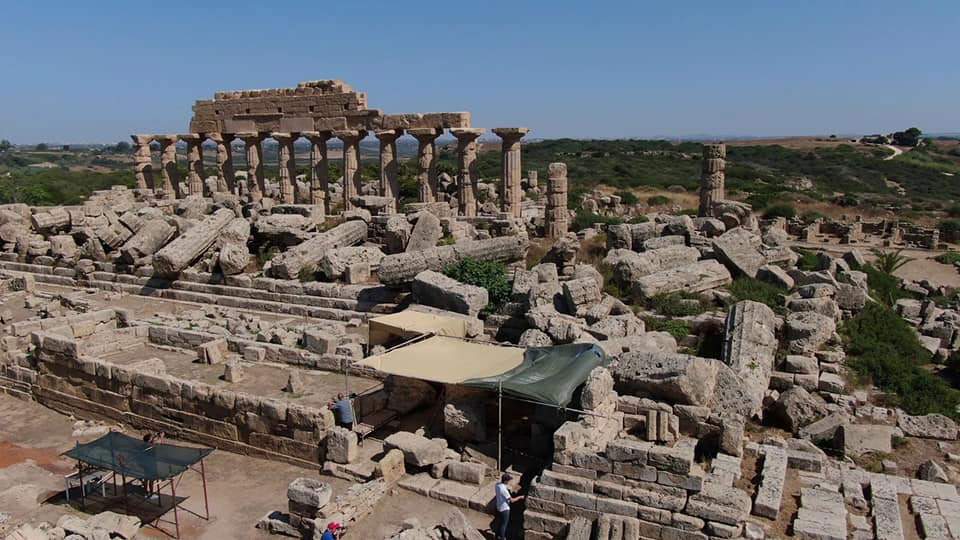Important new findings at Selinunte in the area of the urban sanctuary
Important findings in the area of the urban sanctuary of Selinunte thanks to the excavation campaign conducted this year by New York University and theState University of Milan: this is a large platform leaning against the front of the monumental Temple R, most likely intended as an altar.
The researches, concentrated in the area in front of Temple R, have allowed to attribute a certain date of 570 B.C. to the precious monument. A space that has been preserved intact in the ancient levels since it was never the subject of excavations in the post-Antique or modern age. Not far from the area where the altar is assumed to have been located, two spearheads and a goat’s horn were also found, possibly votive depositions datable to the time of Temple R construction. Finally, a life-size marble arm belonging to a statue about 6 feet tall was found that can be associated with a forearm fragment found four years ago and made of the same material and with the same proportions. The two fragments are referable to a statue of kouros, the main male statuary type in Archaic Greek sculpture. The statue, which most likely had a votive function as part of the large urban sanctuary, may have been damaged during the Carthaginian seizure of Selinunte in 409; the sculpture was likely dismembered and reused as filler and recycling material in the Hellenistic period.
The findings conclude the major campaign of archaeological investigations and excavations conducted in the archaeological area by the Institute of Fine Arts of New York University and the State University of Milan under the scientific coordination of the archaeological park’s management, which is focusing on the recovery of study and research activity by strengthening relations with universities.
“The results of the research campaign that has just been conducted,” says Regional Councillor for Cultural Heritage and Sicilian Identity Alberto Samonà,“are of great importance for the knowledge of the urban sanctuary built between the end of the seventh and the end of the fourth century BC. The excavations conducted in Selinunte, during this flourishing season of Sicilian archaeology and the resumption of relations with universities around the world are paving the way for the creation of a laboratory that involves, throughout the year, young people and scholars who come to Sicily from all over. An experience,” the councilor continues, “that returns interesting elements for the purposes of the historical reconstruction of ancient Sicily for a springtime of archaeology in Sicily, which increasingly looks like a season, not only fruitful, but above all lasting and able to consolidate solid international relations.”
“The Park’s project, in line with the directives of Councillor Samonà,” added the director of the Archaeological Park of Selinunte, Cave di Cusa and Pantelleria, Bernardo Agrò,“aims at the creation in Selinunte of a large laboratory, prodromal to the establishment of a school of specialization in archaeology. Young archaeologists from different parts of the world are already present in the area of the archaeological park, and the project ’The permanent laboratories of arts and sciences’ envisages the constant exchange of experiences between young Sicilian archaeologists and colleagues from other backgrounds. In this sense,” Agrò concludes, “there is a strong collaboration with the University of Palermo, which is directly involved with Professor Aurelio Burgio and Dean Oscar Belvedere who works with the University of Berlin. In addition, two Sicilian archaeologists are currently part of the mission headed by Professor Marconi. This is a very important project that offers young Sicilian scholars the opportunity to practice in the field with experience already during their academic training.”
 |
| Important new findings at Selinunte in the area of the urban sanctuary |
Warning: the translation into English of the original Italian article was created using automatic tools. We undertake to review all articles, but we do not guarantee the total absence of inaccuracies in the translation due to the program. You can find the original by clicking on the ITA button. If you find any mistake,please contact us.




























